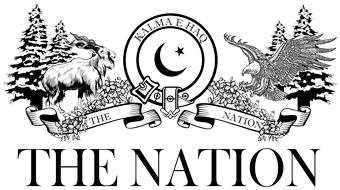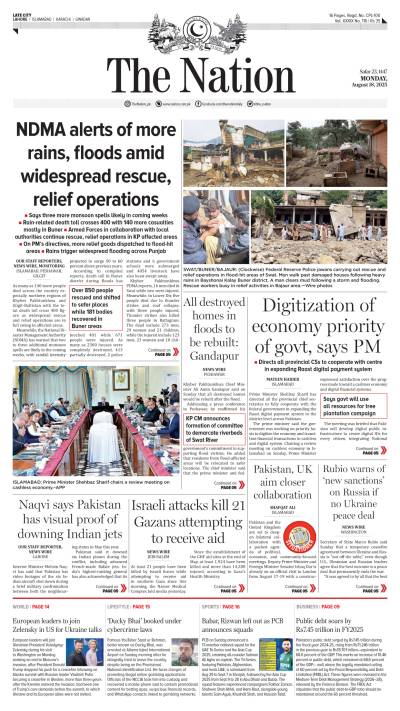The months of May and June 2025 have been incidentally with significant happenings in the South and West Asian regions. On 7 May 2025, India attacked Pakistan on a false pretext and was responded to by Pakistan in a befitting manner. Iran supported Pakistan in this conflict politically and diplomatically. The Iranian Foreign Minister even travelled to both countries to calm the situation. The ceasefire came into effect on 10 June 2025. On 13 June 2025, Israel launched surprise attacks on key military and nuclear facilities in Iran, which were responded to by Iran with missile attacks. Pakistan extended full political and diplomatic support to Iran, and separate resolutions condemning Israel’s aggression were passed in Pakistan’s upper and lower houses. According to reports, Pakistan was even consulted by the US administration on the issue, and Pakistan advised the US to bring the conflict to an end. Iranians were grateful to Pakistan and chanted “Thank you Pakistan” slogans on the streets and in the Iranian Parliament. Both neighbours emerged praiseworthy from the conflict situations they faced respectively, but another important outcome was the ever-closer affinity between them, which was visible from high-level visits from both sides. The Iranian President, Dr Masoud Pezeshkian, visited Pakistan from 2 to 3 August 2025, and a number of MoUs in the fields of information technology, law and justice, climate change, and tourism were signed. It is expected that formal agreements in these fields will follow soon.
The high point of the Iranian President’s visit was the mutual concern that trade between both countries must be enhanced from the current $3bn to $10bn in a shorter time. Despite the fact that Pakistan and Iran are neighbours and have, by and large, maintained cordial diplomatic relations, except for brief periods, they have not accrued much benefit from their geographical contiguity. The most glaring gap lies in bilateral trade. It is true that the cheapest trade is with one’s neighbours, yet geopolitical circumstances kept both countries at bay in this field. The incidents in May and June 2025 seem to have had a positive impact, and both are now concerned about the meager amount of bilateral trade despite the natural advantages they enjoy. It is also noteworthy that there is a substantial amount of informal trade between Iran and Pakistan, which is almost equal to the formal one.
A review reveals that both countries have much to offer each other. Pakistan is already purchasing 200MW of electricity from Iran for its Makran Division and Gwadar. Iran has the 4th largest oil reserves and the 2nd largest gas reserves, which form its most important exports, accounting for 82 per cent of the country’s export revenues. Other exports include chemicals, plastics, fruits, ceramic products and metals, Persian carpets, saffron, turquoise jewellery, and miniature paintings. Iran grows cereals (wheat, barley, rice, and maize), fruits (dates, figs, pomegranates, melons, and grapes), vegetables, cotton, sugar, dried fruits and nuts (pistachios, almonds, walnuts, raisins, and dates), and petrochemical products (bitumen, polyethylene, and polypropylene). Iranian industrial capacity is very sound, and most items are fabricated within Iran. Iranian food products are of high quality, and our Makran coastal belt is replete with Iranian products. Pakistani rice, mangoes, and oranges are favourites among Iranians. Pakistani-made sports gear and medical instruments also secure a place in Iranian markets. However, our textile products have not yet been introduced in Iranian society, where Turkish clothing dominates.
There is a Joint Economic Commission in place that holds yearly meetings, alongside chambers of commerce meetings on both sides, yet much remains to be achieved. For instance, the Preferential Trade Agreement (PTA), which was signed between the two countries in 2004 and came into effect in 2006, is still the key framework for their trade. It has not been replaced by a Free Trade Agreement (FTA), despite several rounds of talks. Moreover, proper banking channels between the two countries have not been established, hindering the progress of commerce and trade. If trade volume is to be raised, then measures must be taken on the ground. Foremost among these is the question of demand and supply on both sides. One productive avenue could be the trade of digital products. These are goods, services, or fees delivered or facilitated through digital means, involving pure digital goods, automated and encoded services, and digital intermediation fees, but excluding the physical trade they enable. For example, downloading a video game, streaming a movie, or buying an advert on a social media platform are examples of digital trade when these involve transactions across international borders. Pakistan and Iran both have thriving digital industries, largely owing to their young populations. Iran’s digital industry is experiencing rapid growth, driven by a young and tech-savvy population and increasing use of technology in various sectors. The Iranian government projects the digital economy to grow at a rate of 35% annually, reaching $100 billion by 2025. Likewise, Pakistan’s IT sector is a major contributor to exports, with a steady growth rate and significant potential for further expansion, expected to reach $15 billion by 2030. Pakistan’s textile industry is a cornerstone of its economy, serving as the largest manufacturing sector and a major contributor to exports. It accounts for roughly 8.5% of GDP and is responsible for about 60% of total export revenues. The quality is comparable to that of many in the region and is surely capable of securing its due place in the Iranian market. If the business community on both sides is incentivised, there are a multitude of dividends that they can reap for their respective countries.
There are various avenues that can serve both countries in enhancing bilateral trade. Obviously, there are also challenges to overcome, but the dividends are greater than the hurdles both face. It is now up to the governments to look into such opportunities, enhance bilateral trade, and boost their economies. The hurdles related to trade can be resolved with concerted efforts and focused attention on the objectives. Although geopolitics has a significant impact on government policies, these need to be handled diplomatically to overcome challenges and capitalise on opportunities.
Reema Shaukat
The writer works with an Islamabad-based think tank and was a visiting Research Fellow at the AIR Center-Baku, Azerbaijan.







